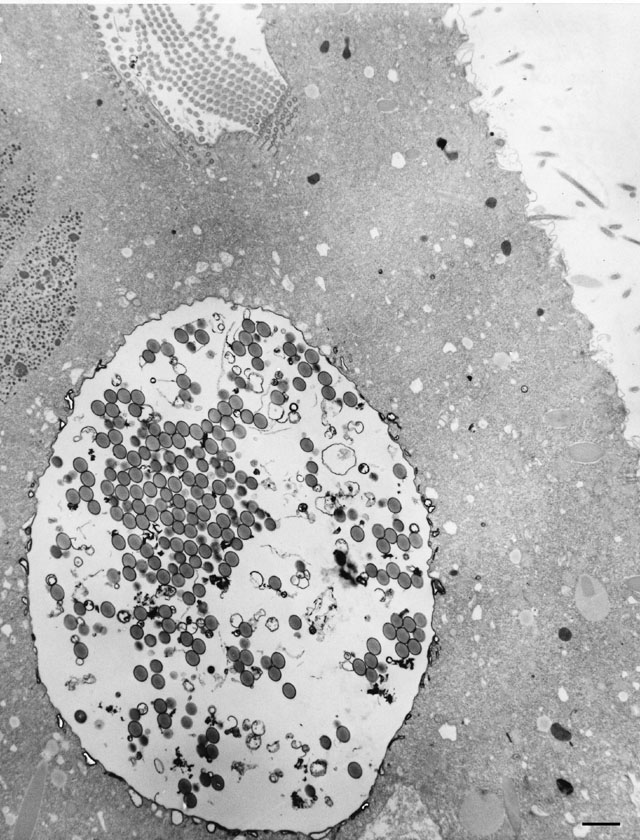|
In this micrograph a very large nascent vacuole has been retained at
the cytopharynx of this cell that had been exposed to cytochalasin B
(CB). Many acidosomes are docked at the membrane of this vacuole. Some
acidosomes contain HRP reaction product and some are free of HRP. The
cell had been exposed to HRP and cytochalasin B for 10 minutes during
which no new DV-I had been released. During this exposure to CB, some
discoidal vesicles continue to move to the cytopharynx and fuse,
acidosomes continue to move to the nascent phagosome and dock, and
endosome and carrier vesicle formation continues and they continue to
fuse with acidosomes. CB has done two things, it has prevented normal
phagosome release from the cytopharynx and it has also inhibited
acidosome fusion with the phagosomes (Allen and Fok, J. Cell Biol.
97:566-570, 1983) once they form. For this study cells were exposed to
0.3mM of CB for 10-20 min. The lack of acidosome fusion with the few
phagosomes that do pinch off during CB exposure was supported by the
fact that the phagosomes became only mildly acid. EM taken on 8/29/84
by R. Allen with Hitachi HU11A TEM. Neg. 1,610X. Bar = 2µm.
|
